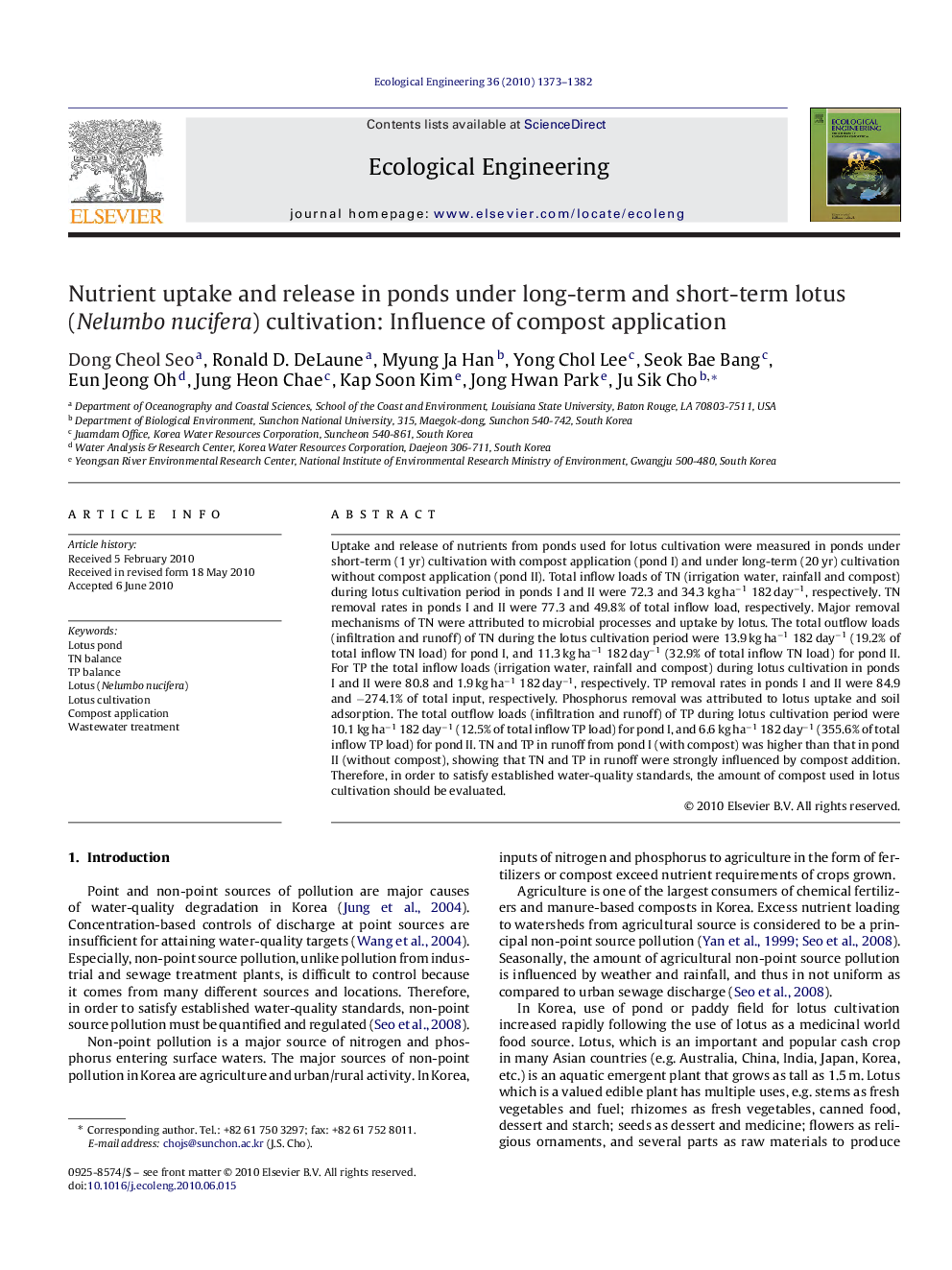| کد مقاله | کد نشریه | سال انتشار | مقاله انگلیسی | نسخه تمام متن |
|---|---|---|---|---|
| 4390585 | 1305181 | 2010 | 10 صفحه PDF | دانلود رایگان |
عنوان انگلیسی مقاله ISI
Nutrient uptake and release in ponds under long-term and short-term lotus (Nelumbo nucifera) cultivation: Influence of compost application
دانلود مقاله + سفارش ترجمه
دانلود مقاله ISI انگلیسی
رایگان برای ایرانیان
موضوعات مرتبط
علوم زیستی و بیوفناوری
علوم کشاورزی و بیولوژیک
بوم شناسی، تکامل، رفتار و سامانه شناسی
پیش نمایش صفحه اول مقاله

چکیده انگلیسی
Uptake and release of nutrients from ponds used for lotus cultivation were measured in ponds under short-term (1 yr) cultivation with compost application (pond I) and under long-term (20 yr) cultivation without compost application (pond II). Total inflow loads of TN (irrigation water, rainfall and compost) during lotus cultivation period in ponds I and II were 72.3 and 34.3 kg haâ1 182 dayâ1, respectively. TN removal rates in ponds I and II were 77.3 and 49.8% of total inflow load, respectively. Major removal mechanisms of TN were attributed to microbial processes and uptake by lotus. The total outflow loads (infiltration and runoff) of TN during the lotus cultivation period were 13.9 kg haâ1 182 dayâ1 (19.2% of total inflow TN load) for pond I, and 11.3 kg haâ1 182 dayâ1 (32.9% of total inflow TN load) for pond II. For TP the total inflow loads (irrigation water, rainfall and compost) during lotus cultivation in ponds I and II were 80.8 and 1.9 kg haâ1 182 dayâ1, respectively. TP removal rates in ponds I and II were 84.9 and â274.1% of total input, respectively. Phosphorus removal was attributed to lotus uptake and soil adsorption. The total outflow loads (infiltration and runoff) of TP during lotus cultivation period were 10.1 kg haâ1 182 dayâ1 (12.5% of total inflow TP load) for pond I, and 6.6 kg haâ1 182 dayâ1 (355.6% of total inflow TP load) for pond II. TN and TP in runoff from pond I (with compost) was higher than that in pond II (without compost), showing that TN and TP in runoff were strongly influenced by compost addition. Therefore, in order to satisfy established water-quality standards, the amount of compost used in lotus cultivation should be evaluated.
ناشر
Database: Elsevier - ScienceDirect (ساینس دایرکت)
Journal: Ecological Engineering - Volume 36, Issue 10, October 2010, Pages 1373-1382
Journal: Ecological Engineering - Volume 36, Issue 10, October 2010, Pages 1373-1382
نویسندگان
Dong Cheol Seo, Ronald D. DeLaune, Myung Ja Han, Yong Chol Lee, Seok Bae Bang, Eun Jeong Oh, Jung Heon Chae, Kap Soon Kim, Jong Hwan Park, Ju Sik Cho,